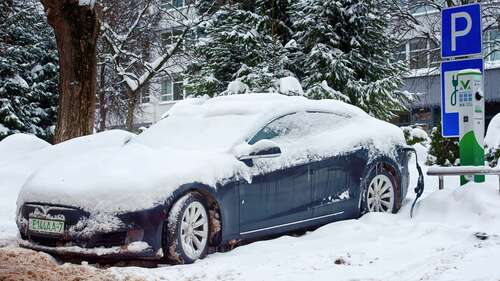
Lithium-ion batteries power Teslas and most EVs, much like the batteries you find in laptops and smartphones, only much bigger. These batteries store the energy that makes your Tesla work. While the optimal temperature for a Tesla battery is between 60 and 80 degrees Fahrenheit, the car performs well in a range of temperatures before it begins to run into problems. However, once the mercury drops below 32 degrees Fahrenheit, Teslas may start to experience reduced efficiency and longer charging times.
In cold weather, the electrolyte fluid in Tesla batteries becomes sluggish, impeding the flow of the lithium ions. When this happens, the battery can’t absorb as much energy from a charging plug. Many Tesla drivers run into problems because they arrive at fast-charging stations with batteries that are too cold to charge. Then, they have to wait for it to heat up before their car will even take electricity and begin charging.

